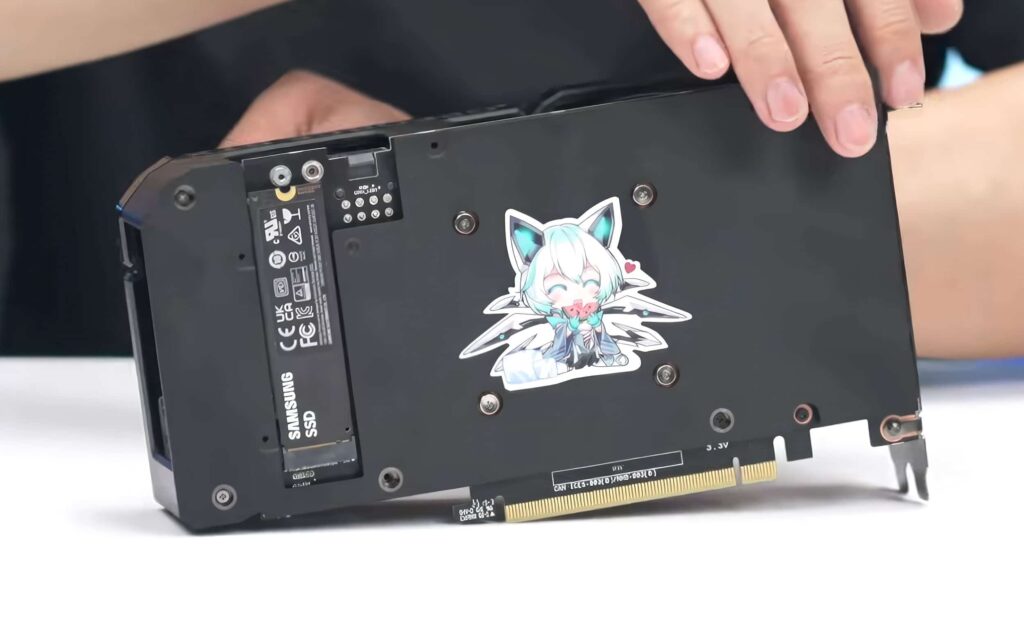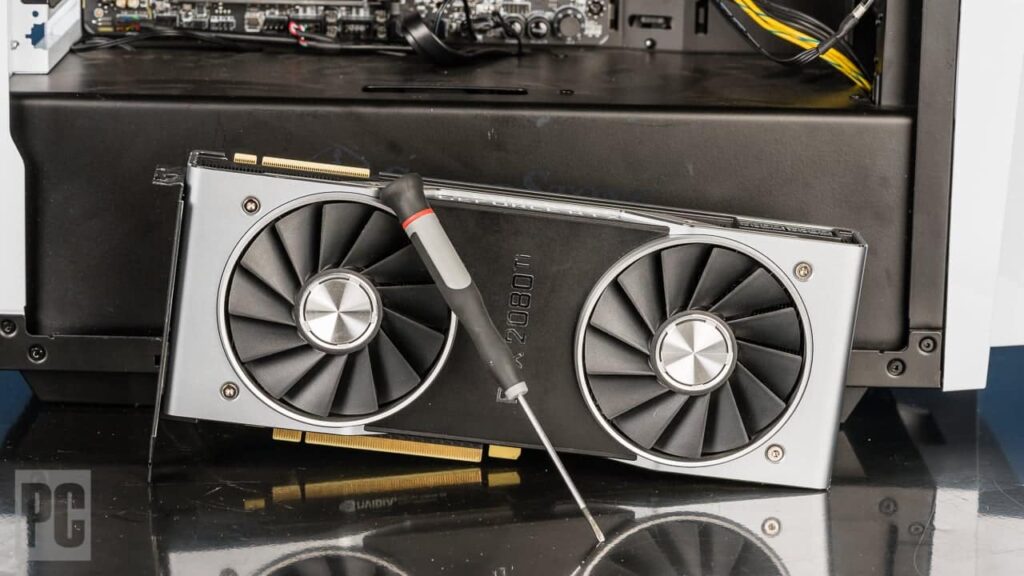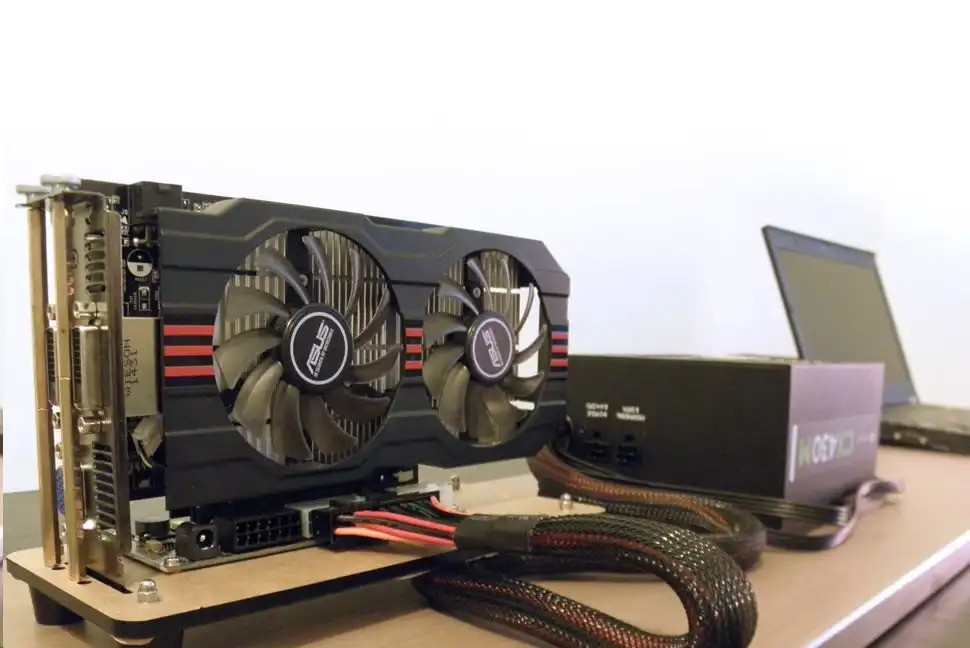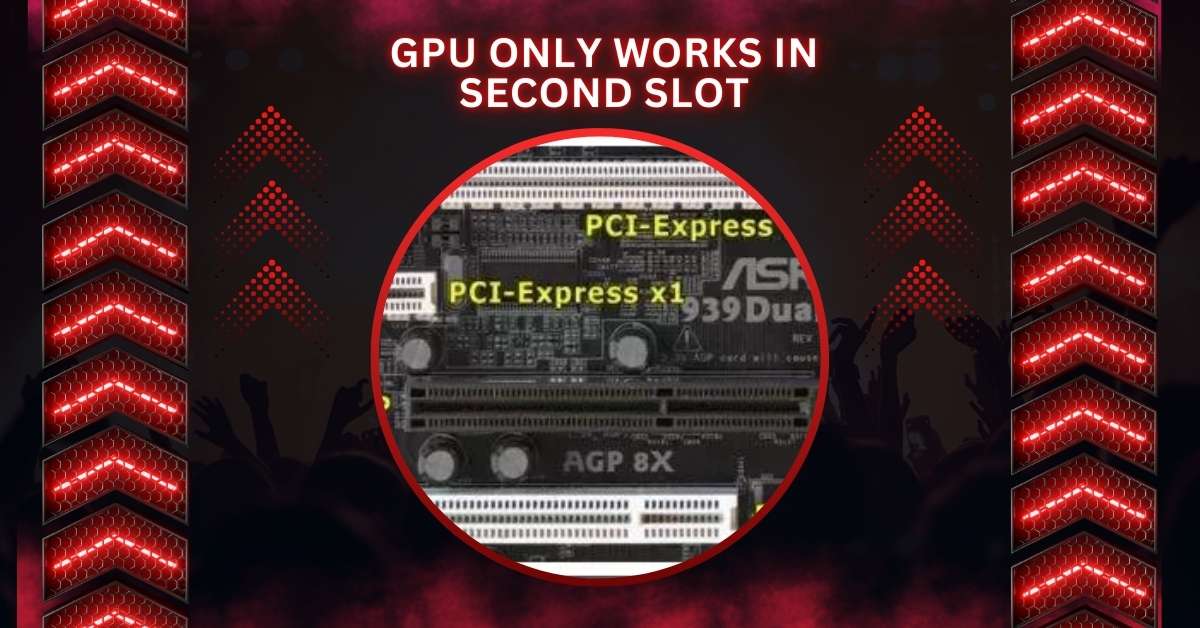When your GPU only works in the second PCIe slot of your motherboard, it can be frustrating, but it’s not an uncommon issue.
If your GPU only works in the second PCIe slot, it could indicate issues with the primary slot, BIOS settings, or hardware connections. Reseating the GPU or updating BIOS may help resolve the problem.
Let’s explore the potential reasons and solutions for this problem.
Faulty PCIe Slot
A faulty PCIe slot can be a leading cause of your GPU only working in the second slot. The first PCIe slot, which typically performs best, may suffer from physical damage, manufacturing defects, or improper installation. Bent pins or dust accumulation can also disrupt the connection between the GPU and the motherboard.
To diagnose this, check the physical condition of the first PCIe slot. Test your GPU in another system. If the GPU works fine in the primary slot of another machine, the issue likely lies with the first PCIe slot of your motherboard.
Outdated BIOS or UEFI Settings

BIOS (Basic Input/Output System) and UEFI (Unified Extensible Firmware Interface) manage communication between your motherboard and connected devices.
If either needs to be updated or properly configured, your GPU may not function correctly in the primary PCIe slot.
Updating your BIOS or UEFI to the latest version is a standard solution. Manufacturers often release updates to improve hardware compatibility, which can resolve GPU detection issues.
Driver Issues
GPU drivers ensure that your operating system can communicate effectively with your graphics card. If your drivers need to be updated or compatible with the GPU when installed in the first PCIe slot, it may only function in the secondary slot. Regularly updating your drivers ensures compatibility with the latest hardware and software features.
Using the “Device Manager” in Windows, uninstalling outdated drivers, and installing the latest version from the manufacturer’s website can resolve this issue.
Also Read: Does Clock Speed Matter For Gaming GPU: What Gamer Need
Motherboard Incompatibility
Some motherboards are designed with specific lane configurations and bandwidth limitations, which can impact the performance of connected devices.
In certain situations, the primary PCIe slot may not provide enough bandwidth or power for high-end GPUs, forcing them to operate in the second slot instead.
Checking your motherboard’s manual for the slot specifications and compatibility requirements can help identify if this is the problem.
Power Supply Limitations
Modern GPUs, especially high-performance models, require substantial power. If your power supply (PSU) isn’t providing enough power to the GPU in the first slot, it may cause performance or detection issues.
This can result from an underpowered PSU or power distribution issues across the slots. Checking your power supply rating and ensuring it’s sufficient for your GPU’s power needs is essential. Aim for a PSU with some headroom above your GPU’s minimum power requirements.
Physical Connection Issues
During GPU installation, a loose or misaligned connection to the first PCIe slot could prevent the GPU from being recognized or functioning correctly.
Double-check the seating of the GPU in the PCIe slot and ensure that it’s firmly connected. Even minor alignment issues can affect the GPU’s performance. Reinstalling the GPU correctly can resolve this.
Dust Accumulation

Over time, dust and debris can accumulate in the PCIe slots, especially in the first slot, which is often exposed to the most airflow in your case.
Dust can block the connectors, preventing proper communication between the GPU and the motherboard. Cleaning the slot and connectors with compressed air can help eliminate this issue and restore full functionality to the first slot.
Outdated CMOS Settings
The CMOS (Complementary Metal-Oxide-Semiconductor) chip on your motherboard stores system settings, including those related to hardware configuration.
If your CMOS settings are outdated or incorrectly configured, your GPU may not function in the primary slot. Resetting the CMOS can restore these settings to default, potentially resolving any conflicts affecting the GPU.
Motherboard Defects or Electrical Issues
Sometimes, despite troubleshooting, the motherboard itself could be the root cause. Manufacturing defects, electrical problems, or faulty circuitry may prevent the first slot from working correctly.
If your motherboard is under warranty, consider contacting the manufacturer for a replacement. In some cases, installing the GPU in another system can verify if the motherboard is the issue.
Multi-GPU Configurations
The second PCIe slot may be reserved for a secondary GPU in systems with multiple GPUs or using technologies like SLI (NVIDIA) or CrossFire (AMD).
In such configurations, ensuring that your system is set up correctly in the BIOS and software settings to support multi-GPU usage is essential.
Incorrect settings may cause the primary GPU to function only in the second slot. Verifying the correct configuration in BIOS and software can fix the issue.
GPU only works in second slot PCIe slot
If your GPU only works in the second PCIe slot, the primary slot may be damaged or improperly connected. Check for physical damage, dust, or misalignment. Updating your BIOS or drivers can help resolve the issue and restore proper GPU function.
GPU only works in second slot gaming
Suppose your GPU works in the second slot while gaming; the primary slot might be faulty or underperforming. You may experience reduced performance if the second slot has fewer PCIe lanes. Ensure the first slot is clean and update drivers for optimal gaming.
GPU only works in one slot
A GPU in only one slot might indicate a hardware or software issue. Faulty PCIe slots, outdated drivers, or incorrect BIOS settings could be the cause. Try reinstalling the GPU, updating drivers, and cleaning the slots to troubleshoot the issue.
Top PCIe slot not working
If the top PCIe slot isn’t working, it could be due to physical damage, a defective motherboard, or outdated BIOS. Try reseating the GPU, cleaning the slot, and updating your BIOS. If it still doesn’t work, a motherboard replacement may be necessary.
PCIe slot not detecting video card
If the PCIe slot isn’t detecting the video card, check for dust, damaged pins, or loose connections. Updating drivers or resetting BIOS might help. Testing the GPU in another system can verify whether the card or slot is the issue.
GPU PCI slot ‘s are not available or a GPU is not configured
If your GPU’s PCI slot is unavailable or not configured, it may be a BIOS or hardware issue. Ensure the PCIe slot is enabled in the BIOS settings and check for hardware compatibility. Updating the BIOS can also help resolve configuration problems.
First PCIe slot not working
If your first PCIe slot isn’t working, inspect it for dust, bent pins, or damage. Try reseating the GPU and updating your BIOS or drivers. If the issue persists, the motherboard could be faulty and need professional repair or replacement.
GPU only working in secondary PCIe slot

If your GPU only works in the secondary PCIe slot, the primary slot may be damaged or misconfigured. Try updating BIOS, checking the slot for debris, or reseating the GPU to restore functionality.
PCIe slot 1 or GPU at fault
When your GPU doesn’t work in PCIe slot 1, it could be either a faulty slot or a GPU. Test the GPU in another system or slot to identify the problem. Cleaning the slot may also help.
Read Out: Is 50 Celsius Hot For A GPU? – The Ultimate Guide In 2024!
What the heck!?!? Graphics card only works in one slot!
If your GPU only works in one PCIe slot, it might be due to a faulty slot, outdated BIOS, or incorrect driver settings. Try updating your system drivers and checking for any physical damage to the slots.
Second PCIe slot not recognizing GPU
If the second PCIe slot isn’t recognizing your GPU, ensure the GPU is properly seated, clean the slot, and update drivers. Testing the GPU in a different system or slot can help pinpoint the problem.
RX 6600 GPU only working on MSI B660M”s Pcie 2 slot (black screen after booting)
If your NVIDIA RTX 2080Ti only works in the second PCIe slot, check for power issues, update the motherboard’s BIOS, and ensure the primary slot is clean. The first slot might be damaged or incompatible.
RX 6600 GPU only working on MSI B660M’s PCIe 2 slot
If your RX 6600 only works on PCIe 2 of the MSI B660M and shows a black screen after boot, check BIOS settings, update drivers, and ensure the first slot isn’t physically damaged or improperly connected.
PC only posts when GPU is in second PCIe slot
When your PC only posts with the GPU in the second PCIe slot, it could mean the first slot is damaged, or your BIOS settings need updating. Try reseating the GPU and cleaning the first slot.
GPU not detected in top PCIe slot?
Check for dust, bent pins, or a loose connection if your GPU isn’t detected in the top PCIe slot. Try updating your motherboard’s BIOS and reseating the GPU to fix detection issues.
Read Out: GPU Stats Extreme Power Saving – Boost Your Efficiency 2024!
One of my video cards only works in a particular slot
When a video card only works in one slot, it could be a faulty PCIe slot or a power delivery issue. Try switching slots or testing the card in another system to identify the cause.
GPU working in 2nd PCIe slot but not first
If your GPU works in the second PCIe slot but not the first, the primary slot might be damaged, dirty, or misconfigured. Reseat the GPU, clean the slot, and update the motherboard’s BIOS to troubleshoot.
FAQs
1. Should GPU go in first or second slot?
Your GPU should generally go in the first PCIe slot for optimal performance since it offers the most PCIe lanes.
2. Can I use a PCIe 4.0 graphics card in a 3.0 slot?
Yes, PCIe 4.0 cards are backward compatible with PCIe 3.0 slots, but performance will match PCIe 3.0 speeds.
3. What does 2 slot GPU mean?
A 2-slot GPU takes up two PCIe slot spaces on your motherboard, typically offering better cooling and higher performance.
4. Why is my PC not detecting my second GPU?
Your PC might not detect the second GPU due to incorrect BIOS settings, power supply issues, or outdated drivers.
5. Does a graphics card have to go in the first PCIe slot?
While it doesn’t have to, using the first PCIe slot generally provides the best performance because it has the most PCIe lanes.
6. I switched PCIe slots on my graphics card, and 2 weeks later it won’t post
Reseat the GPU, check for dust or debris, and ensure all connections are secure. A faulty slot or loose cable could be the problem.
7. GPU struggles only in the primary PCIe slot. Is this a motherboard issue?
Yes, it could indicate a motherboard issue if the GPU works in other slots but struggles in the primary one.
8. GPU only working in secondary PCIe slot despite the first being functional with other cards
The issue could be BIOS settings, lane distribution, or a power supply problem. Reset BIOS and reseat the GPU.
9. New GPU works only on bottom PCIe slot, old GPU works in top slot
The top slot may have compatibility issues with the new GPU or require a BIOS update. Try updating drivers as well.
10. GPU doesn’t work in top slot but works in bottom slot – MSI PRO B660M-A-WIFI-DDR4
A damaged top slot, incorrect BIOS settings, or power supply issues could cause this. Try reseating the GPU and updating the BIOS.
Conclusion
If your GPU only works in the second PCIe slot, it could be due to a faulty primary slot, outdated BIOS, or power supply issues. Cleaning the slot, reseating the GPU, or updating BIOS may help restore functionality.
